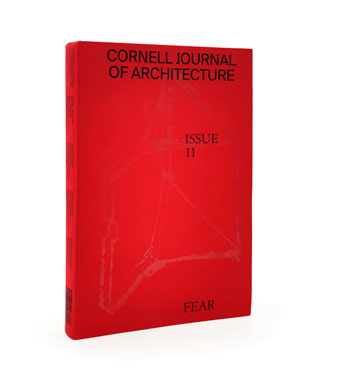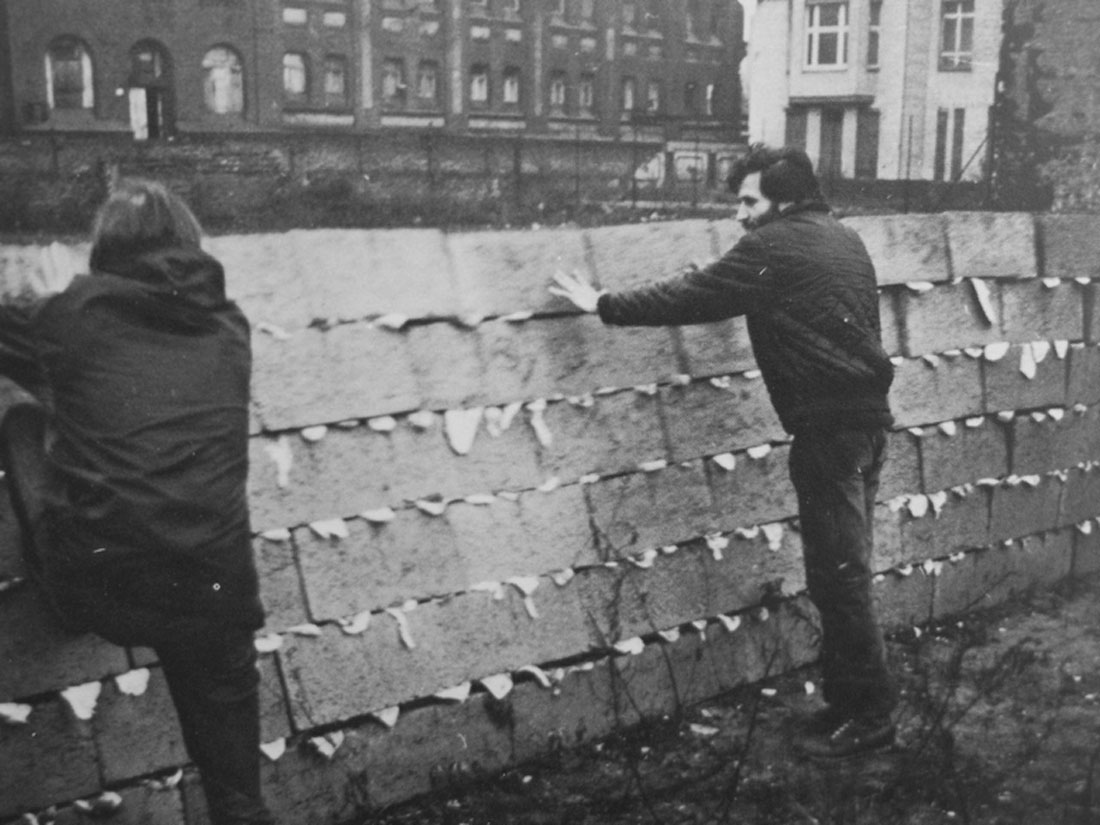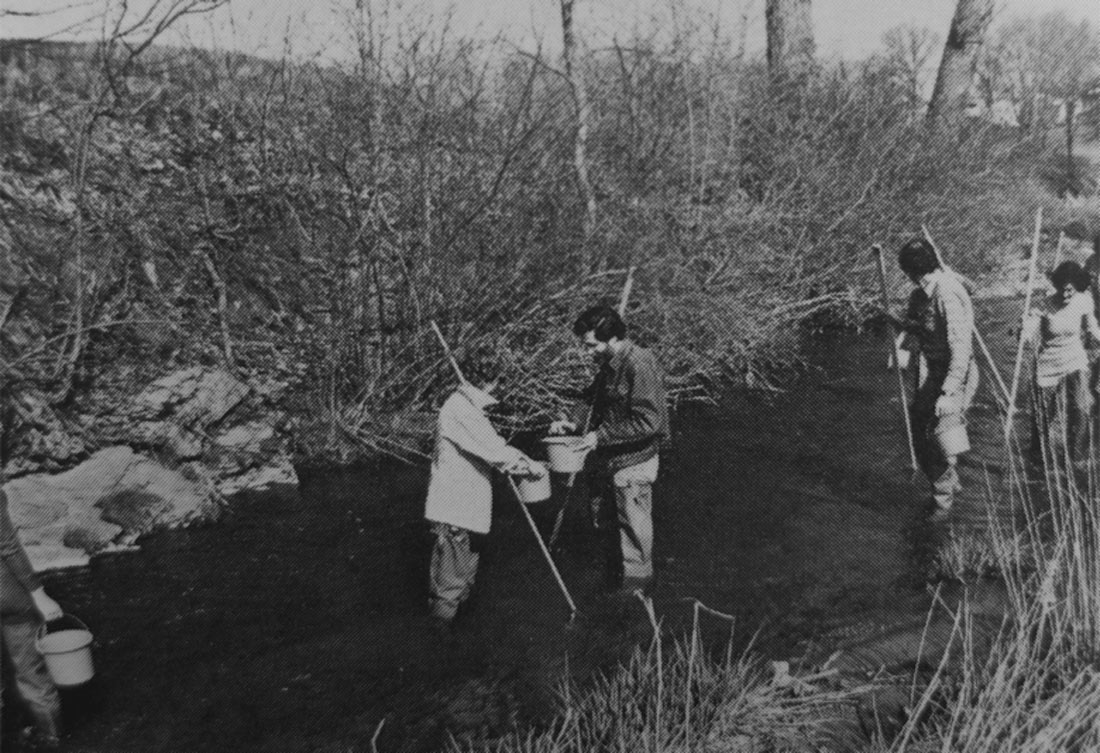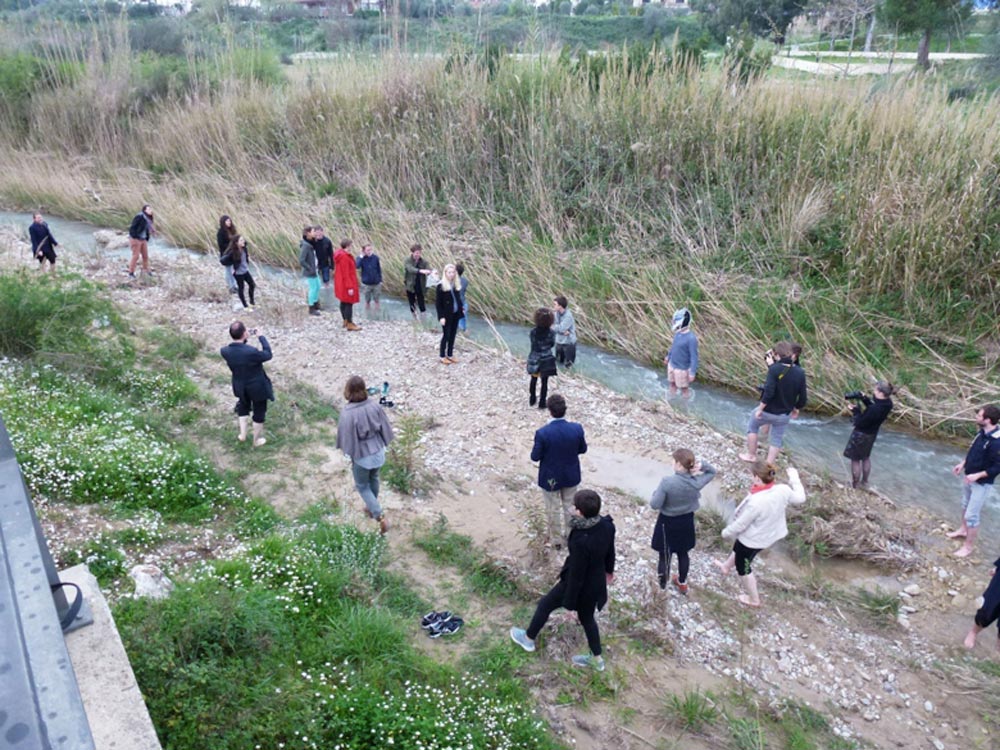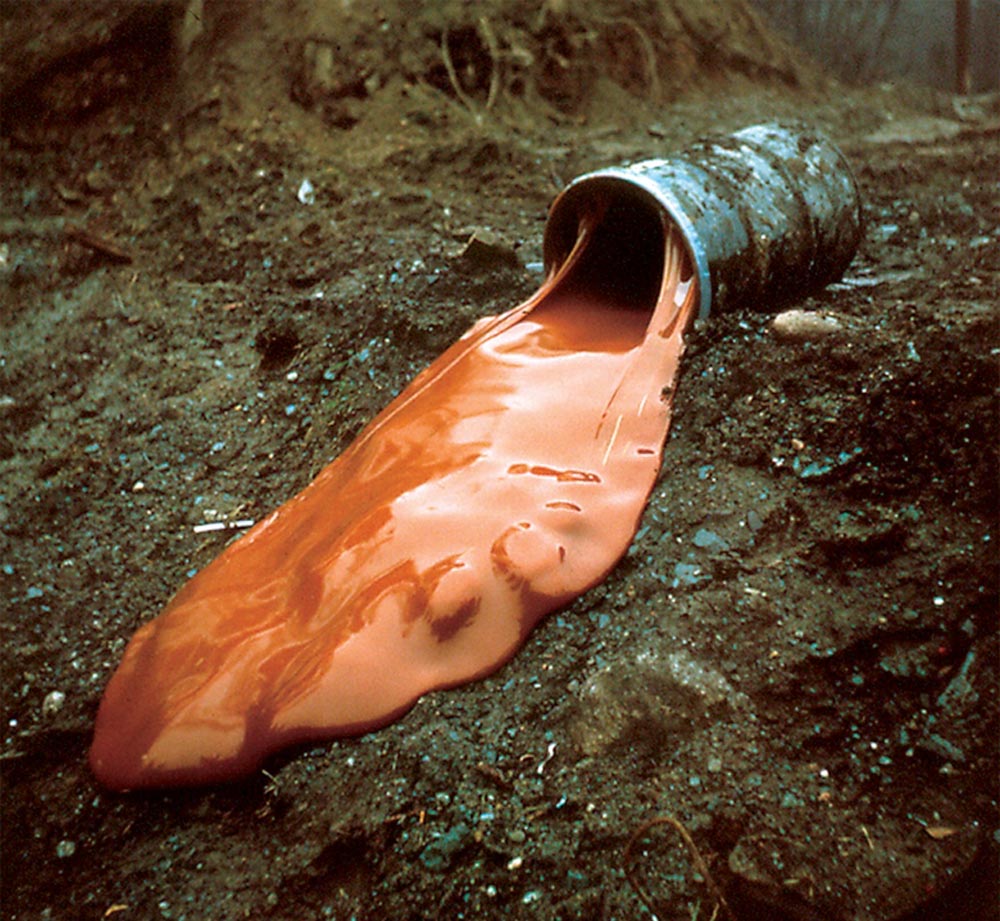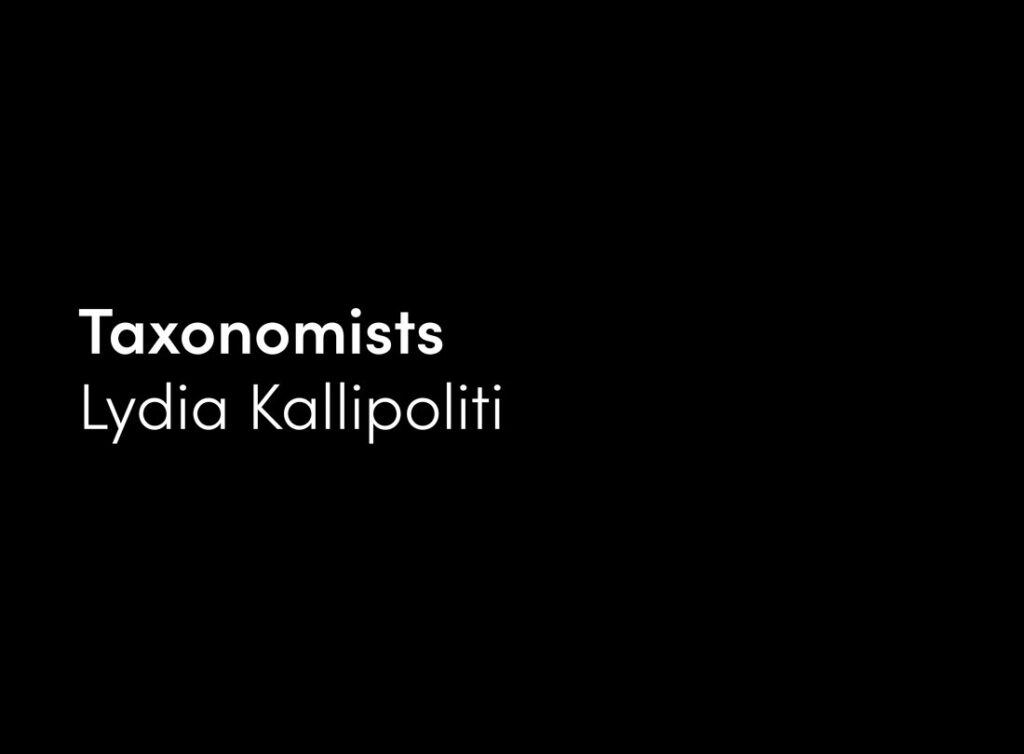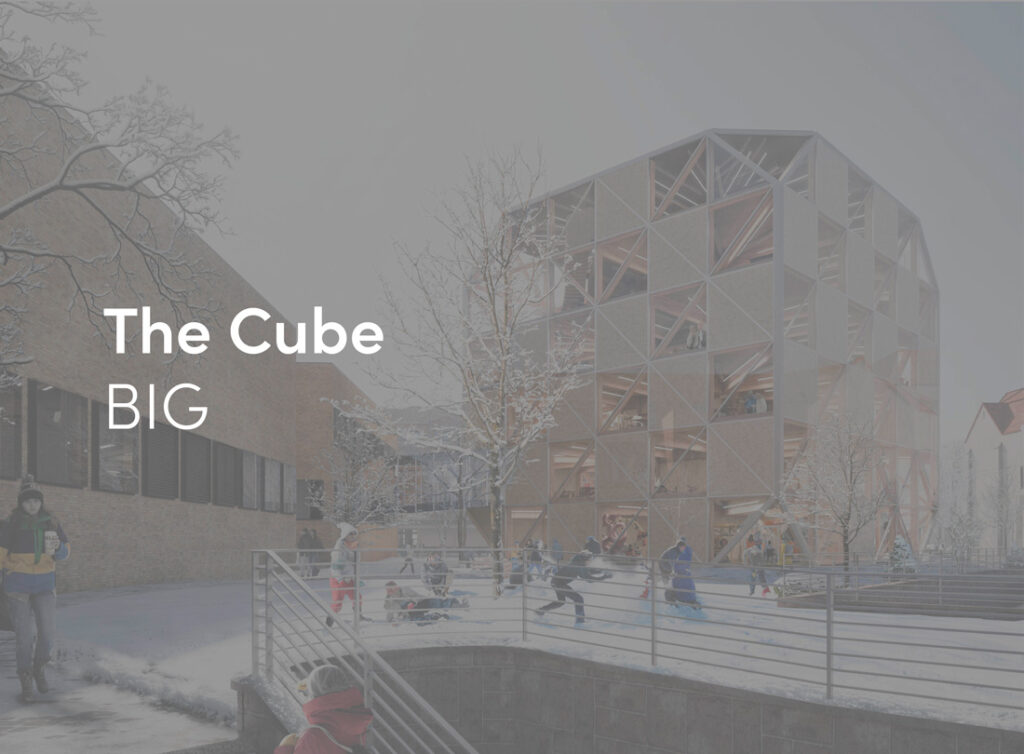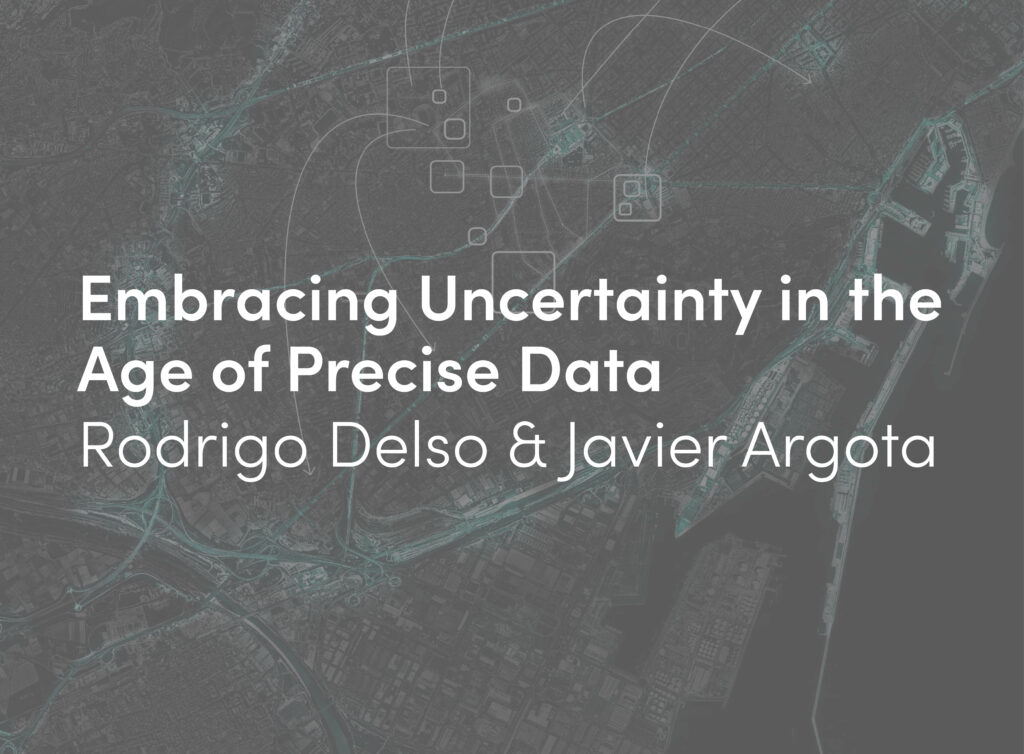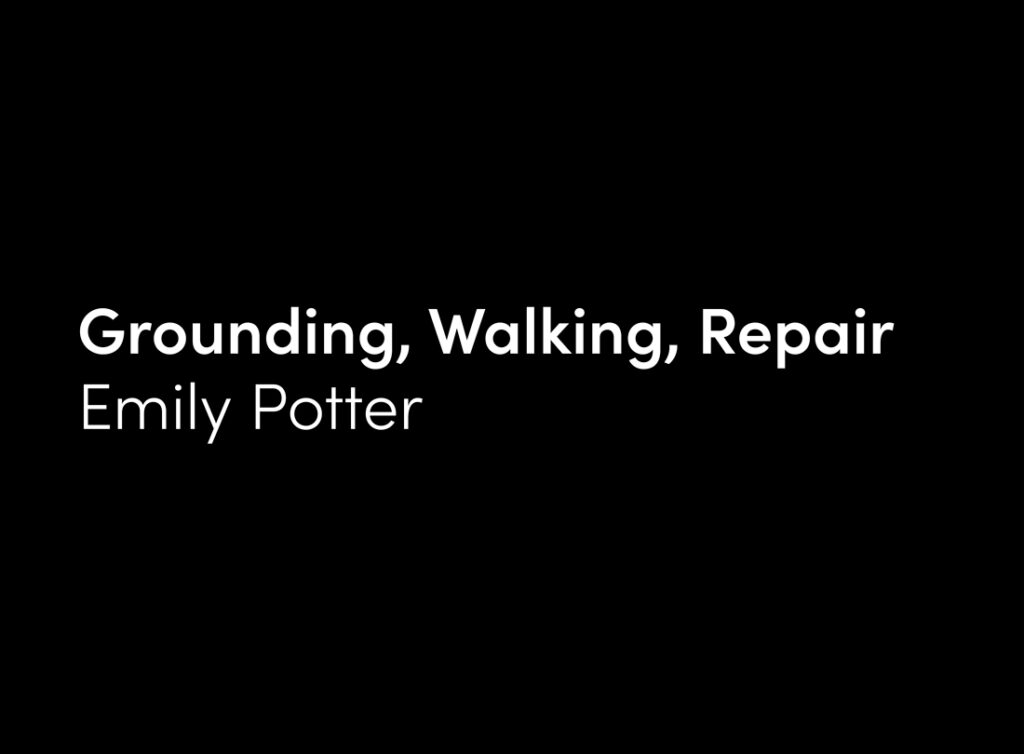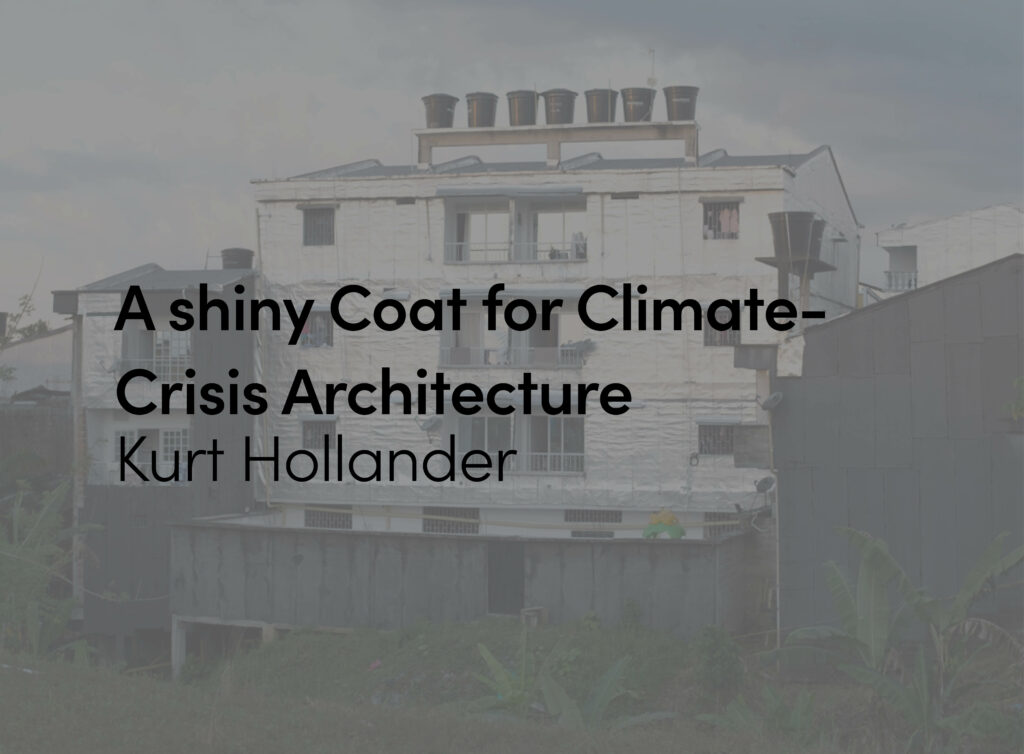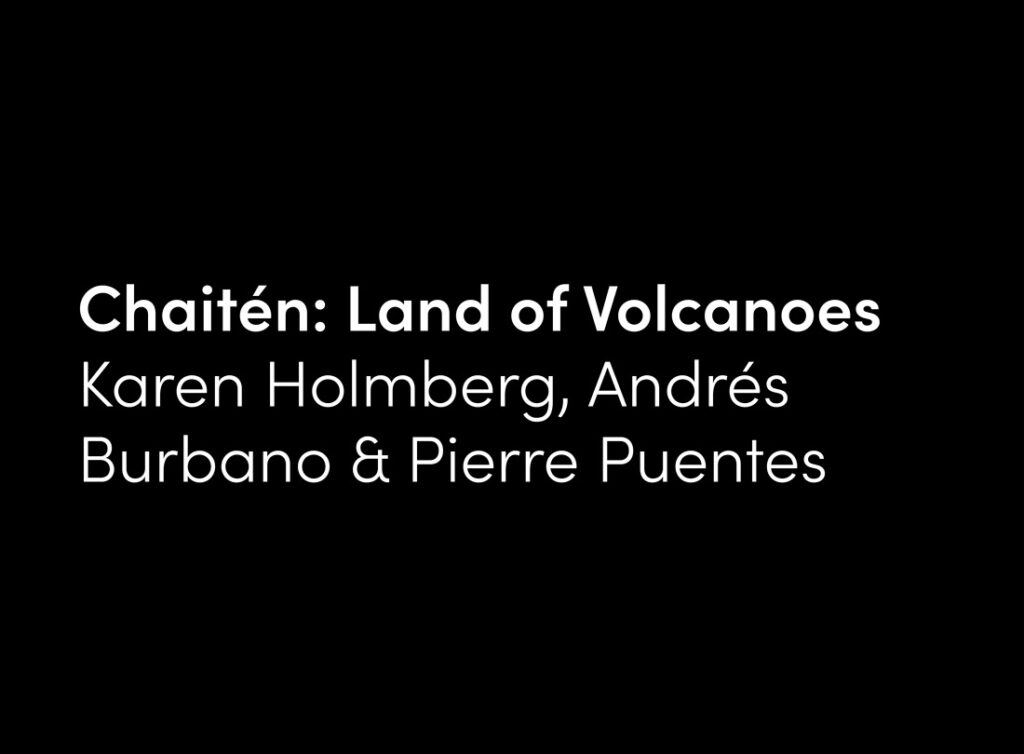…I think the major issue now in art is what are the boundaries.
—Allan Kaprow, Robert Smithson and the Art of their Time, 1979.
Wolfgang Tillmans’ Empire US / Mexican Border (2005) depicts a border fence reminiscent of a bolt of lightning running like a fissure across the composition. [1] The cast shadow of its grill parallels and complements this jarring, vertical movement. A sign reading “Declaration Line” confirms the politically tense location, yet the spaces intertwine in a labyrinthian manner as though inviting misinterpretation. People are captured from behind, faces angled away from the shot as though to eliminate the possibility of empathy. The clothing of the male figure in the center indicates cool weather, but alludes to prison garb. The chaos composed around the fence obscures the immediate situation.
Locating the vantage point of the camera proves to be a difficult task—normal circumstances forbid photography. The tips of the metal fencing undoubtedly point towards Mexico to impede climbing. From this, we infer the American territory is on the left and Mexican territory on the right, with the view oriented towards the south during the evening hours. Perhaps this picture shows a border crossing in Arizona or New Mexico as commuters return home from work.
I have only crossed this American border condition twice. Once in the spring of 2018 with students on a trip to Texas, between El Paso and Juarez, and once in Tijuana, in the late 1990s, with Allan Kaprow who was living in San Diego at the time. On our return trip, the officer asked him, “Citizen?” without glancing at the presented documents. Kaprow abruptly declared, “American citizen!” with a tone still tolerable in a time before (conspicuous) socio-political consciousness and the establishment of the United States Department of Homeland Security. Though significantly before September 11th, 2001 and the massive increases in security, defense, and societal paranoia, the authoritarian resemblance to Ancient Rome (the assumption that only Roman citizens were citizens) was all too evident.
Allan Kaprow, Sweet Wall, 1970. Photo by Dick Higgins. Los Angeles, Getty Research Institute.
Empire (US/Mexico border) references both Wolfgang Tillman’s work of art as well as the concept described by Michael Hardt and Antonio Negri in their book Empire.[2] Their concept of empire builds upon notions of late capitalism by encompassing a larger trend of industrialized expansion. Still a valid model of understanding the current situation, the book addresses archetypal border conflicts. Fleeing from war, economic misery, and environmental devastation due to climate change, displaced people and refugees seek asylum in the fortresses of Europe and North America. If we speak of borders, we cannot ignore the current political situation and prevalence of walls such as those erected between Israel and the occupied Palestinian Territories or the United States and Mexico.
Moving back in time to the late 1960s and 1970s, the work of Allan Kaprow resonates with the current discussion of borders, specifically his piece addressing the division between East and West Berlin during the Cold War. Even in 1970, twenty-five years after the end of World War II, traces of destruction remained omnipresent in the Frontstadt. The very epicenter of the Cold War, Berlin initially split in 1961 and was subject to further subdivisions west of the wall into American, French, and British sectors until Berlin was pockmarked by border controls and checkpoints. Only a handful of artists and dealers dared to stretch out their feelers in this rugged terrain such as René Block, a contemporary who invited Allan Kaprow for Sweet Wall in November 1970 on an empty lot near Potsdamer Platz. The score for Sweet Wall goes as follows:
Berlin / empty lot / near the Wall
building a wall / (cement blocks)/(ca. 30 m × 1.5 m)
cementing blocks / with bread and jam
toppling wall
removing material / empty lot [3]
Like with most Happenings and Activities by Kaprow, there was no audience, but the activity was recorded through photographs and film. In 1976, Block published a booklet documenting the Activity with Kaprow offering an interpretation:
Some art containing political references attempts to affect social change as directly and quickly as possible. Its themes are blunt and moral choices are clear. In other cases, the art’s political content is a metaphor intended to play upon an already awakened consciousness…Yet this art also presumes to have some positive effect upon society; it simply doesn’t specify how and when. [4]
Sweet Wall belongs to the latter sort of art. Kaprow was obviously aware of the significance of the wall, yet withheld explicit criticism of those either directly or indirectly responsible, be it the regime of the German Democratic Republic, the regime of Nazi Germany, or the American and Soviet governments for conducting the Cold War. In his words:
Sweet Wall, looking back six years, contains ironic politics…It is for those who cannot rest politically indifferent, but who know that for every political solution there [are] at least ten new problems. As a parody, Sweet Wall was about an idea of a wall. The Berlin Wall was an idea, too: it summed up in one medieval image the ideological division of Europe. But it also directly affected the lives of more than three million residents, at least six governments, as well as countless non-Berliners. [5]
By performing the construction and destruction of a wall, Kaprow neither illustrated a political event nor claimed art as a symbolic problem solver. Rather, I would argue that he depicted a different kind of wall: one of connection instead of separation, even including a pleasurable component through its material choice. He offered an alternative way of seeing, experiencing, and shaping reality. In his words:
Sweet Wall was free-standing. It enclosed nothing, separated no one…The Berlin Wall…will stand until either a war or a political act by a later generation removes it. The blocks of the Sweet Wall were bound together by fresh bread and jam (…), while those of the Berlin Wall were joined by cement…Sweet Wall could be played in the mind without serious consequence at the time. Like the wall with its bread and jam, symbols could be produced and erased at will. The participants could speculate on the practical value of such freedom, to themselves and to others. That was its sweetness and its irony. [6]
When Kaprow talks about “parody” with regard to Sweet Wall, this suggests that the Cold War itself was perceived, to some extent, as fictional and theatrical. Perhaps one of the most infamous examples of this occurred between American Vice President Richard Nixon and Soviet Prime Minister Nikita Khrushchev. During the summer of 1959, the Kitchen Debate was a televised exhibition of consumer goods. In front of an American kitchen, the two superpowers discuss the advantages and disadvantages of their respective domestic technologies.
From Kaprow’s point of view, the “sweet wall” was also analogous to the “sweet home” because of its positioning within a familiar set of values. Western media and propaganda depicted the Wall as emblematic of the inhuman regime of the East, a counterpoint to the presumed moral superiority of the West. In a kind of political figure-ground play, the so-called “Free World” relied on the contrasting image of the Wall for vindication of their domestic affairs. The existence of the Berlin Wall and the Iron Curtain served as spectacular backdrop for an ideology of freedom and moral superiority to the “East.” Yet it also eclipsed injustice within the capitalist societies, namely the “color curtain” of racial discrimination and the “glass ceiling” of gender discrimination.
As the very act of planning imposes limits, language and thought also inscribe borderlines. In Sweet Wall, there is no floor plan, elevation, or abstraction, yet every moment in the Activity remains contingent. Kaprow reflected on the potential danger of ideas and consequently, the authority of design. Aware of the colonizing potential of concepts, he states that the wall (also) embodies an idea, which manifests in his continuous critique of the claim for normative authority by his contemporaries. The following quote is Kaprow’s critique of Robert Morris’ essay “Anti-Form,” published in Artforum in 1968:
Most humans, it seems, still put up fences around their acts and thoughts—even when these are piles of shit—for they have no other way of delimiting them…When some of us have worked in natural settings, say in a meadow, woods, or mountain range, our cultural training has been so deeply ingrained that we have simply carried a mental rectangle with us to drop around whatever we were doing. This made us feel at home…It may be proposed that the social context and surrounding of art are more potent, more meaningful, more demanding of an artist’s attention than the art itself! Put differently, it’s not what artists touch that counts most. It’s what they don’t touch. [7]
Not only do we draw and control borders in space, we also draw, negotiate, and control borders in time. This leads to the following questions: Where is the limit between contemporaneity and history? When does an art work stop being relevant for the present and turn into a historical case?
Allan Kaprow, Echo-Logy, 1975. Los Angeles, Getty Research Institute.
Moving forward to the year 2013, my students and I travelled to Greece (prior to the refugee influx, but in the full throes of the financial crisis) to visit Athens and Olympia. The trip not only intended to study the ruins of the antique site, but to reenact Kaprow’s Activity Echo-Logy, originally performed on May 3-4, 1975 by Kaprow and a group of participants in the New Jersey countryside. Like with Sweet Wall, there was no audience, but a booklet documents the event.[8]
1 carrying some downstream water
a distance upstream
bucket-by-bucket
pouring it into stream
transferring a mouthful of upstream water
a distance downstream
mouth-to-mouth
spitting it into the stream2 sending a mouthed silent word
a distance upstream
person-by-person
saying it aloud to the trees
propelling a shouted word
a distance downstream
person-by-person
mouthing it to the sky3 transporting a gas-soaked cloth
a distance upstream
(waving it gently in the air)
person-to-person
waving it gently until dry
carrying a bagged breath
a distance downstream
each adding a breath
opening the bag to the wind
As the title Echo-Logy points at the relation between the past and present, I wanted to discover if this piece still played a role in our present. Just outside the ancient site of Olympia, our reenactment took place in a small creek, over the course of an hour, and allowed for reflection of the trip until that point. The metaphor of an echo demonstrated curiosity in the resonance of the past in the present. This exercise also referenced the legend of Echo and Narcissus. After being rejected by Narcissus, the water nymph Echo dissolves into a voice without a body.
Can one compare Europe to the self-absorbed Narcissus and Greece to the rejected Echo, left to her destiny? Would such a metaphor help us locate our position within the field trip and help us see the change more clearly? The cup transporting upstream water arrived and I handed it to the next member of the group, downstream, careful not to spill any. Soon it would be poured out, dissolved, gone. The notion of entropy came to my mind as I recalled what we had witnessed the other day in Athens, namely the loss of confidence in the future. Did our performance of standing gingerly in the cold water, transporting a tiny quantity of it, reflect what was happening in the country on a much larger scale? Did our actions help to focus our view in order to lead to action, or would it remain symbolic?
The next cup approached, delivered between the teeth, and it became impossible to speak. Echo came to my mind, the poor water nymph, who could only mumble and mimic the sounds of what others said. Whose voices had we heard during the trip? Was it observers from the North—including ourselves—speaking about Greece and inadvertently telling the Greek how to act? Were we not echoing, mindlessly reiterating, what politicians and newspapers in the North reported, namely that it was Greece’s fault? Where were the voices of the Greeks amid all this? While the group sent the whispered word from one to the next, I remembered the muffled voices of the people in the streets, mere shadows of the past, echoes of better days.
Finally, the plastic bag arrived, inflated breath by breath, passed down with the tender fear of collapse. Headlines once again came to mind, talking about deflation, stagflation, withdrawn capital and the fate of the Euro. Next to symbolizing the economy, the plastic bag containing our breath—psyche in Greek—also represented students and teachers momentarily uniting into a community.
Philip Ursprung, Reenactment of Eco-Logy, 2013.
Were we, in the otherwise hierarchic realm of academia, acting as equal participants? Were we historians caring about the legacy of a canonical artist? Were we producers or consumers; actors or observers? Were we affirming the current economic regime or subverting it? Were we the border control of the discipline, or trespassers and smugglers?
Although the answer remains evasive, I would argue, that Echo-Logy and Sweet Wall are part of our present time. Kaprow’s art represents how limits and borders, whether physical or imaginary, are defined, negotiated, and challenged. Contesting means of regulating in a deregulated context is a motif present throughout his entire oeuvre.
Artist Robert Smithson expressed interest in Kaprow’s Fluids, likely due to his contemporary work on Non-Sites. The similarities between Kaprow and Smithson lie in their critique of the artistic mainstream and the ideology of linear progress that reigned in the 1960s. In an interview conducted in 1969 with Art News, Smithson states:
…I think the major issue now in art is [defining] what are the boundaries…There’s no exit, no road to utopia, no great beyond in terms of exhibition space. I see it as an inevitability; of going toward the fringes, towards the broken, the entropic. But even that has limits. Every single perception is essentially determinate. It isn’t a question of form or anti-form. It’s a limitation. I’m not at all interested in the problems of form and anti-form, but in limits and how these limits destroy themselves and disappear…There are strict limits, but they never stop until you do. [9]
In January 1971, Smithson realized Glue Pour for the exhibition 955000 at the Vancouver Art Gallery, curated by Lucy Lippard. A barrel of (water-based) red glue was poured down the slope of a garbage dump before shortly seeping into the ground. The connection to work produced by the painters of the New York School, specifically Jackson Pollock’s technique of “drippings,” is evident. Besides connecting with the recent past, these works also relate to the immediate present, namely some of the floor sculptures made around the same time. Lynda Benglis spilled colored latex directly onto her studio floor, as seen in her floor sculpture Bounce (1969). Similarly, Richard Serra flung hot lead onto the ground for Casting (1969). In these floor pieces, the focus surrounded either the production process itself or the formal outcome due to the material properties. Uniquely among his contemporaries, Smithson specifically did not want to constrain or control the formation of the work, but rather, let it run its course.
Robert Smithson, Glue Pour, 1969, Vancouver, Canada. © Holt/Smithson Foundation / VAGA at Artists Rights Society (ARS), NY.
In 1972, Smithson boycotted Documenta 5 in Kassel. While a number of artists protested what they regarded as high-handedness from the curator, Harald Szeemann, their objections did not exceed written word. Contemporaries such as Sol LeWitt, Hans Haacke, and Daniel Buren still participated in the exhibition while Smithson, along with Carl Andre, Donald Judd, Robert Morris, and Fred Sandback, withdrew entirely. Smithson’s stance, and in particular his essay “Cultural Confinement,” published in the Documenta catalogue, is a diatribe against the attempts of cultural institutions to control art. It goes far beyond the ideological disagreements between American and European artists to vehemently oppose the notion of a “warden-curator”—simultaneously a flagrant lunge at the exhibitions-maker Szeemann and a bid to promote his own idea of Land Reclamation.
A radical critique of the art museum as an institution, Smithson’s text compares it to a “cultural prison.” With pieces locked in and “looked upon as so many inanimate invalids, [they] wait for critics to pronounce them curable or incurable…neutralized, ineffective, abstracted, safe, and politically lobotomized [for consumption] by society.” [10] The “warden-curators,” as he saw them, were separating art from the rest of society. [11]
Smithson was critical of what he saw as a curator imposing restrictions on an art exhibition, rather than leaving it to the artists to set their own boundaries. At Documenta, he exhibited sculptural works in the open air stating, “when a finished work of twentieth-century sculpture is placed in an eighteenth-century garden, it is absorbed by the ideal representation of the past, thus reinforcing political and social values that are no longer with us.” [12]
Walls, enclosures, fortifications are among the most obvious signs of architecture in times of fear. They make visible latent forms of anxiety and manifest the will to impose fear on others. From the history of art one can learn a lot, perhaps more than from a specific history of architecture, about the role of boundaries both literal and virtual. Art has changed in the last fifty years, but negotiating the place of art within society remains as vibrant as half a century ago. In connecting works of art by Tillmans, Kaprow, and Smithson, I have attempted to show connections over fifty years. Their oeuvre is a critique of boundaries that defined, colonized, and excluded. It is a plea for the constant analysis and renegotiation of boundaries. Their enduring stance on unsolved issues pertaining to the distribution and representation of art elicits emotion through its relevant message, haunting us like an undying echo.
